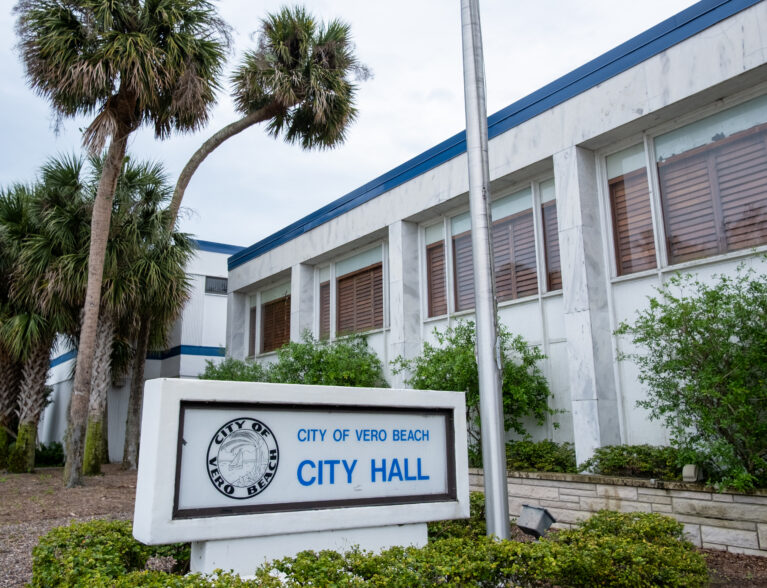
Nearly 80 percent of Vero Beach voters approved a November 2022 referendum to commercially develop the 17-acre parcel that now contains a defunct municipal power plant because they wanted to eat, drink, play and socialize on the city’s mainland waterfront.
That’s why the City Council, despite the daunting challenges presented by the current construction market, voted unanimously last week to move forward with the first phase of its Three Corners project, choosing a group headed by Indiana-based Clearpath Services to make a 20-year dream a reality.
No one, though, should expect this much-anticipated endeavor – if it doesn’t get derailed during negotiations – to be a significant moneymaker for the city.
Not anytime soon, anyway.
Based on current projections and estimated costs, city officials and taxpayers shouldn’t expect to clear much more than $1 million per year when the site is fully developed and operational.
And while every dollar that finds its way into Vero Beach’s coffers is welcome, the revenues generated by developing the northern tier of the Three Corners property will pale in comparison to the nearly $6 million in annual transfers to the city’s general fund from its shuttered electric utility.
“That’s not why we’re doing this,” Mayor John Cotugno said last week. “We’re doing this for the community, because this is what the citizens told us they want – access to the lagoon, a waterfront hub that we currently don’t have.
“We’re not doing this because we expect to make money,” he added. “That was never our motivation, never the driving force behind pursuing this project. The goal was to develop the site at no cost to the city and, hopefully, generate enough revenue to mitigate our expenses once the place is open.”
Truth be told: If money were the prevailing factor, selling the property would have been more prudent, though it’s highly unlikely city voters would have given their blessing to any referendum that would permit it.
The value of the power-plant parcel was appraised at $17 million last year, according to Peter Polk, the city’s Three Corners project manager.
Throw in the 17 acres south of the 17th Street bridge – on which the city’s still-operating, soon-to-be-moved wastewater-treatment plant currently sits – and we’re talking about the city taking in more than $35 million.
Then invest it.
As one city official put it: “It would take 50 years to get that kind of money from the Three Corners.”
You might also add to the equation the property-tax revenue the city could have collected from a new owner, especially if that lagoon-front property were sold to a residential or mixed-use developer.
Again, that’s not going to happen – not in the foreseeable future – even if the city’s plans for the Three Corners site fall through. Nor is there much of a chance the property might be used to create a mainland version of the island’s Riverside Park.
Not only does the city already provide the community with an abundance of park land, but parks are amenities that produce additional costs – not revenue.
How much revenue can we expect to be generated from a fully developed, first phase of the city’s Three Corners Master Plan, based on Clearpath’s proposal?
Those numbers will be determined by the terms of the long-term property lease the city negotiates with Clearpath later this year, along with how popular the place becomes once it opens to the public.
While Clearpath told council members it plans to open the site in phases – starting with a waterfront village, marina and tiki bar that could operate by the end of 2027 – the entire project isn’t expected to be completed until at least 2028.
The city’s consultants, who evaluated Clearpath’s proposal, have projected stabilized annual net revenues of slightly more than $34 million in the sixth year of the development’s operations, Polk said.
That number refers to the predictable and consistent income the property is projected to generate year after year, after it has reached a stable operating state.
During last week’s interviews with Clearpath and The Blue at Vero Beach – the other partnership that submitted a Three Corners proposal – Cotugno asked if the developers would consider sharing a percentage of their revenues with the city.
Both said they would.
It’s too soon to know how such a revenue-sharing clause would impact the amount of money the city might seek in lease payments, but it’s difficult to imagine Clearpath agreeing to give up any revenue, knowing it will need to absorb tens of millions of dollars in infrastructure costs.
“I’m assuming everything is negotiable,” Cotugno said.
It’s more likely that Clearpath will ask the city’s negotiators to forgo lease payments until the development is completed and fully operational – and that time could be five years away.
The city, which has no intention of covering any Three Corners development costs, probably will agree to at least some lease-payment forbearance during the construction phase.
So, just to kick around some numbers, let’s say the city negotiates a lease that brings in 5 percent of the total land value, which is not unreasonable for a waterfront property in Florida.
At that rate, Clearpath would pay the city $850,000 per year.
Add to that figure the $415,000 the city would collect annually in ad valorem taxes, based on Vero Beach’s current 2.768 millage rate and an estimated $150 million in assessed value of the property and its buildings.
That’s $1.265 million.
The city would not get a dime of the tourist-tax dollars from the 245 hotel rooms in Clearpath’s proposal – the county refuses to share those revenues with its municipalities – but it would receive a percentage of the sales-tax money generated on the site.
It’s fair to project, then, that revenues from Three Corners development could contribute somewhere between $1.2 million and $1.5 million annually to the city’s general fund.
But the city would be required to provide public safety, which city officials say would require four police officers and could cost up to $500,000 per year.
Do the math, and it becomes obvious the project will not be a cash cow for the city and its taxpayers.
“Every dollar helps,” Cotuguno said. “But the Three Corners project is not an immediate panacea to what faces us now, and it’s not the silver bullet that solves all our problems in the future.”
It’s not supposed to be.
That’s not why city voters overwhelmingly endorsed the referendum to develop the site into a dining, retail, recreational and social gathering place on the mainland waterfront.
They want what voters think Vero Beach sorely needs, and the council is trying to give them what they want.
We’ll see what happens.



